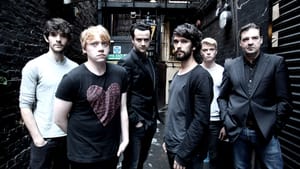Stay in the Loop
BSR publishes on a weekly schedule, with an email newsletter every Wednesday and Thursday morning. There’s no paywall, and subscribing is always free.
From Downton Abbey to seedy Soho
Brendan Coyle in 'Mojo' in London

Attention, all Downton Abbey addicts! Bates has been spotted on the stage in London’s West End, though you’ll hardly recognize him. Prepare yourself for a shock: He’s playing a bad guy, and a pretty dangerous one, at that.
The long-suffering Bates, valet to Lord Grantham of Downton Abbey, is one of the main reasons we’re all hooked on this scintillating, soap-operatic series. Bates is the martyr of “downstairs Downton” — the selfless, self-effacing survivor of World War I who has been to hell and back, both on the battlefield and in the servants’ quarters. With the stoicism of a saint, he’s faced every trial and tribulation, including gunshot wounds, professional rivalry, personal ridicule, wrongful criminal accusations, prison stints — and judging from season four already, there is worse for him in store. Forever in harm’s way, he manages to endure, maintaining his steadfast principles, his integrity, and his dignity. He’s one of those victims who earns both our admiration and empathy by facing his adversities with a stiff British upper lip and not a drop of self-pity.
So what is a stand-up fellow like that doing as a manager of a 1950s London nightclub, mucking around with criminal lowlifes? Ask Brendan Coyle, the chameleonlike actor who plays both parts so brilliantly and inhabits both worlds (regal Downton and gang-infested Soho) so effortlessly.
Death in Soho
Coyle plays the role of Mickey in the current West End revival of Mojo, Jez Butterworth’s searing 1995 drama about the seedy world of rock-’n’-roll London. This explosive production is playing at the Harold Pinter Theatre, and the dark spirit of the theater’s namesake looms large over it. Set in a sleazy Soho nightclub in the 1950s, Mojo dramatizes a harrowing 24-hour period during which the club owner (an offstage character named Ezra) is brutally killed, hacked into pieces, and stuffed in two garbage cans in the club’s back alley. The club’s employees — Mickey and a handful of bumbling, clueless assistants — are left to deal with the fallout and the threat of Harry Ross (another offstage character), a rival club owner, underworld figure, and Ezra’s alleged murderer.
Mickey takes charge of the scene, mobilizing his motley crew with quiet yet steely authority and barricading them in the club till they decide their next move. The coterie includes Sweets (Rupert Grint) and Potts (Daniel Mays), two jumped-up, pill-popping assistants who bear an uncanny likeness to Rosencrantz and Guildenstern in their ineptitude. There’s also Skinny (Colin Morgan), who is more interested in showing off his new periwinkle-blue pants than he is in solving the problem.
Mickey’s intent is to stage a cover-up (for reasons to be revealed later). But his plan is challenged by Baby (Ben Whishaw), Ezra’s son, who arrives on the scene. The psychotic Baby is seriously damaged goods. He alternates between outlandish emotional gestures toward the club’s employees (he goes out to buy them all toffee apples) and uncontrollable outbursts of violence wherein he brandishes a sword and threatens them. He engages in a power struggle with Mickey, who in turn expels him from the premises. But Baby returns with a captive — one of the nightclub’s singers (Tom Rhys Harries), dressed in a silver-sequined suit, whom he hangs upside down and tortures, determined to extract crucial information and discover the identity of his father’s true murderer.
Brendan Coyle plays Mickey with the same strong, silent stoicism that he projects as Bates in Downton. His angular jaw is set in stony resolve as he pursues his objective with calculated determination. In the midst of the play’s kinetic, chaotic movement, his stillness radiates both power and danger. Meanwhile, the charismatic Ben Whishaw gives a dazzling performance as Baby. At the end of Act I, when he breaks into a Dionysian dance to deafening rock music, he bears a striking resemblance to the young Mick Jagger, with his wiry body, gyrating hips, and wild, jerky movements.
Indeed, every member of this stellar all-male ensemble, under the meticulous direction of Ian Rickson, gives a finely chiseled, sharply defined performance, rendering these characters unforgettable. As a result, it’s a definitive portrait of a vivid, colorful, violent era in modern urban history.
The world of Mojo is ambiguous and threatening, reminiscent of Pinter’s bleak landscape (No Man’s Land) and Mamet’s tough-talking terrain (American Buffalo, Glengarry Glen Ross). But Butterworth brings the brutality to the surface. At one point in the play, the ensemble trashes the entire stage in a drug-induced frenzy. The throbbing rock beat that punctuates the scenes (with outbursts of “Be-Bop-A-Lula”, “Yakety Yak” and other period songs) becomes the play’s primal force, bringing out the aggression in these men, all in the name of power, rebellion, hedonism, or just plain survival.
With its lavish display of violence, Mojo calls to mind the plays of Martin McDonagh (The Lieutenant of Inishmore has an identical torture scene) and the films of Quentin Tarantino. Like the aforementioned authors, Butterworth laces his play with hilarious moments. But he goes a step further. Butterworth has compassion for his characters as well as a sense of tragedy (see his award-winning 2009 play Jerusalem.) The violence in Mojo is merely underscoring the senselessness, and, in the end, the heartbreak of wasted young lives.
Meanwhile, next time you watch Mr. Bates in action (this Sunday night, undoubtedly), remember what lurks under those quiet surfaces.
What, When, Where
Mojo, by Jez Butterworth, directed by Ian Rickson, playing now until February 8, at the Harold Pinter Theatre, 6 Panton Street, London, http://www.mojotheplay.com/.
Sign up for our newsletter
All of the week's new articles, all in one place. Sign up for the free weekly BSR newsletters, and don't miss a conversation.
